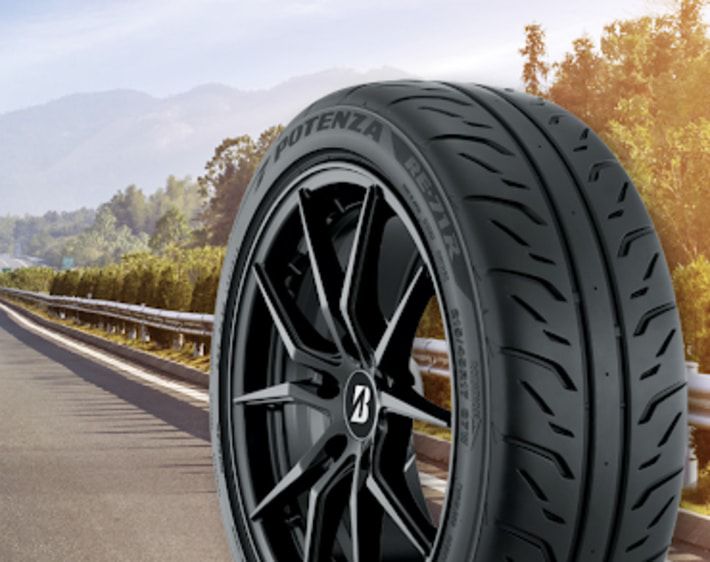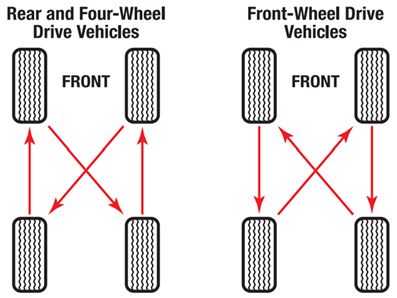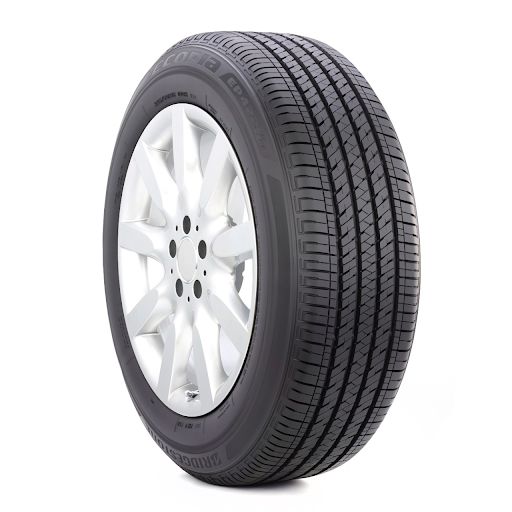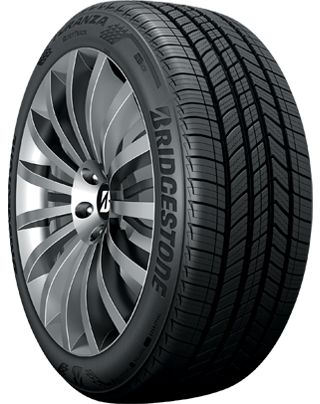Directional tire tread is one of three primary tread patterns found on a tire, with the other two patterns being symmetrical and asymmetrical. While from a distance these tread patterns may look the same, they couldn't be more different! In this post, we'll look specifically at what makes a tire directional, how it differs from tires with other tread patterns, and how some drivers can benefit from directional tires.
An In-Depth Look At Directional Tires
The tread pattern on directional tires is distinct and differs from other tread patterns in that it is designed to rotate in only one direction. This doesn't mean that the tire cannot drive in reverse. Rather, it refers to the direction that the tire must be mounted in relation to the car. Directional tires are primarily engineered for high-performance vehicles.
Directional Tire Performance
Directional tires, like the Bridgestone Potenza RE71R, are designed for increased traction, handling, and performance on wet or dry roads. Thanks to the V-shaped tread pattern, directional tires excel at evacuating water, which provides their excellent wet traction and helps you avoid hydroplaning. Additionally, directional tread patterns can be commonly found on many summer and winter tires.
How To Tell If Your Tires Are Directional
At a glance, the tread will look like an arrow pointing in the direction the tire rotates, which should be toward the front of your vehicle. Taking a closer look, you may notice that the tread pattern has a solid ribbed center with the tread moving up and away from the center of the tire, like a V or Y.
Another way to check if your tires are directional is to look for the mounting direction. Since directional tires can only be installed facing a certain direction, an arrow or indicator is placed on the sidewall of the tire to indicate the direction the tire should be mounted.
Mounting Directional Tires
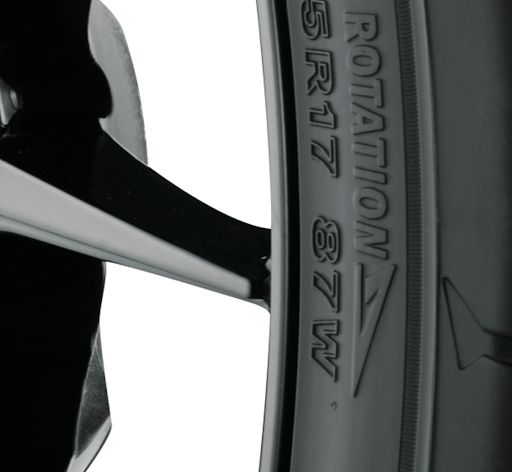
It is important to note that asymmetrical tires also require proper mounting onto the wheels because they have an “inside” and “outside” face. Once mounted on the wheel correctly, they can be installed facing any direction on the vehicle.
Since directional tires are manufactured to be facing one direction only, they can't be rotated like symmetrical or asymmetrical tires. With symmetrical and asymmetrical tires, a tire rotation normally consists of moving the front wheels to the rear, and the rear wheels to the front following specific procedures.
On a front-wheel drive vehicle, rear tires are moved to opposite sides on the front, and front tires are moved to the same sides on the rear. On a rear-wheel drive, four-wheel drive or all-wheel drive vehicle, rear tires are moved to the same sides on the front, and the rear tires are moved to opposite sides on the rear. Additionally, on four-wheel drive or all-wheel drive vehicles, the tires can also be rotated in a “double x” pattern — where the rear tires are rotated to opposite sides on the front, and the front tires are rotated to opposite sides on the rear. With symmetrical or asymmetrical tires, all of these methods allow the tires to remain on the wheels during a rotation service, which makes the service less time-consuming.
When performing a rotation on a vehicle with directional tires, the tires must be rotated following different procedures. Normally, directional tires can be rotated front to rear on the same side so they are still installed facing the correct direction. However, if there is uneven tire wear or the tires and wheels are “staggered” sizes, it is best practice to remove the tires from the wheels and remount them in the proper direction for new placement on the vehicle. This procedure is more involved and can take longer than rotating symmetrical or asymmetrical tires.
Luckily, it’s easy to get professional tire rotations, whether you’ve got directional, asymmetrical, or symmetrical tread patterns. Call your local Firestone Complete Auto Care to learn how you can get affordable or free tire rotations for the life of your tires.
The Benefits of Directional Tires
Most directional tires excel in two main areas: water evacuation and high-speed handling.
As previously stated, the center-ribbed design along with the V-shaped tread pattern helps evacuate water out of the tire while maintaining optimal road contact, allowing it to avoid hydroplaning. Additionally, directional tires provide excellent handling and traction in dry conditions. With optimized tread that is designed for maximum road contact, these tires can corner better, grip better, and handle better than some other tires, such as all-season tires. And the unidirectional design on directional tires helps them do all of these things at higher speeds than other tires.
Directional Vs. Non Directional Tires
Outside of directional tires, most tires will fall under the categories of either symmetrical or asymmetrical tires.
Symmetrical Tires
Symmetrical tread is perhaps the most common tread pattern used on tires. These tires feature the same tread pattern on the inside and outside tread blocks. Symmetrical tires do not have to be mounted a certain direction, making tire rotations a bit simpler compared to directional tires.
Asymmetrical Tires
Asymmetrical tires, like the Turanza QuietTrack, feature different tread patterns on the inner and outer tread areas. For instance, half of the tire may have a directional pattern, while the other half has a more symmetrical tread pattern. The unique tread patterns on asymmetrical tires are designed to assist with things like water evacuation, dry grip, and snow traction. Like directional tires, asymmetrical tires must be mounted with a specific side facing out, which will usually be marked on the side of the tire.
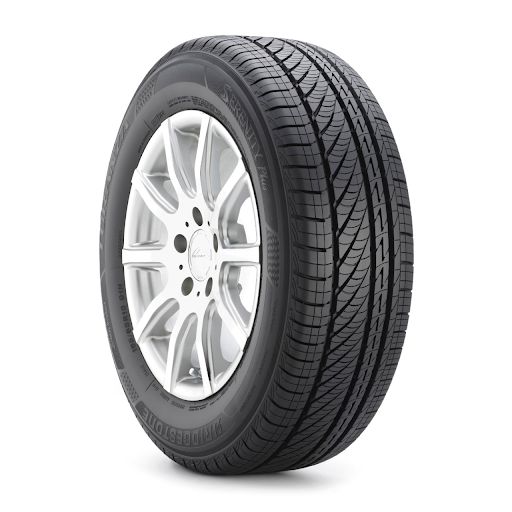
Find the Right Tires for Your Vehicle
Are you ready to take your high-performance vehicle to the next level with directional tires? Schedule an appointment at a Firestone Complete Auto Care near you to find top-rated directional tires from your one-stop tire shop. Are directional tires not for you? No worries. We'll help you find tires that best suit your vehicle, so you can drive with confidence.
